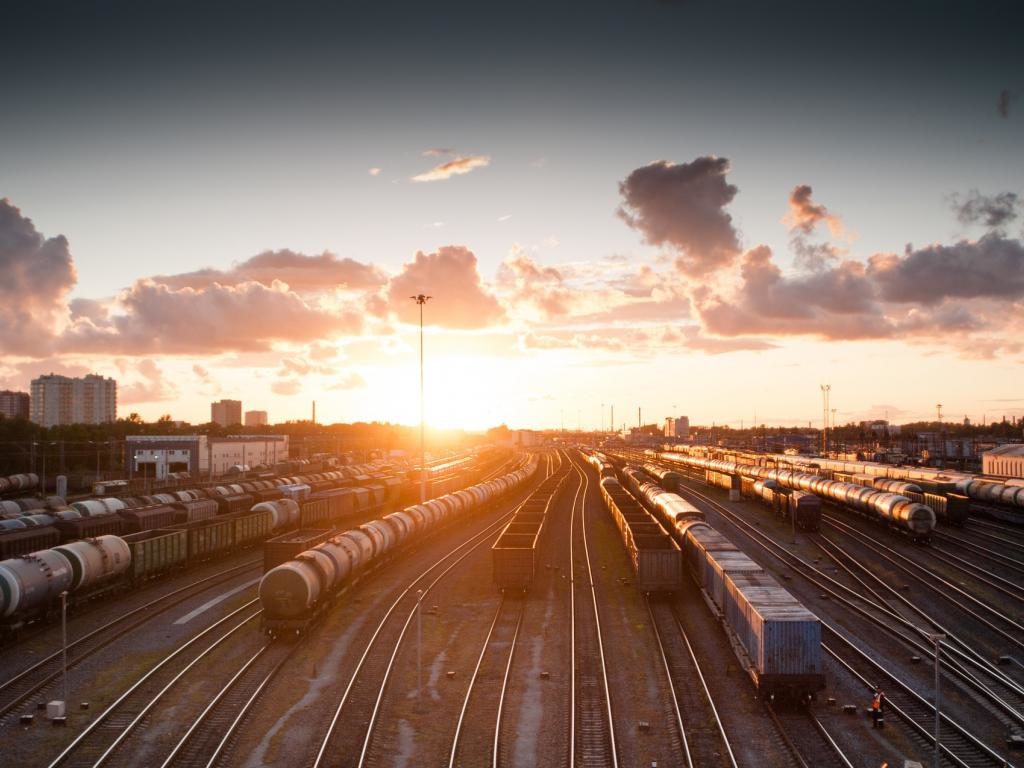Introduction
This research seeks to identify and measure the complete life-cycle costs of major transportation infrastructure investments, including the frequently ignored social and economic externalities that affect air quality, water quality, land-use, safety, congestion and time loss, noise and light pollution, and other non-financial costs that have eluded traditional accounting but need to be weighed in both the public and private sector decision-making process for highway vs. rail infrastructure challenge.
Principal Investigator
Michael Koontz, Transportation Planner,
Former Director USDOT’s Congestion Mitigation and Air Quality Improvement Program (CMAQ)
Project Advisors
Dr. Mingzhou Jin, Associate Head,
Industrial and Systems Engineering, University of Tennessee
Pasi Lautala, Director
Rail Transportation Program, Michigan Tech Transportation Institute
Project Leader
Michael Sussman, Chairman,
OnTrackNorthAmerica

Background
The United States, at the highest level of its national planning activities has been unable to pinpoint freight transportation costs and benefits of individual transport modes. Balanced and thorough comparisons and decision making remain elusive if not impossible as investments are made without consideration of their full life-cycle impacts. Both the U.S. Department of Transportation’s Freight Fluidity Performance Measures project and the U.S. Department of Commerce’s Advisory Committee on Supply Chain Competitiveness Council narrowly focus on only three metrics; 1) shipping time, 2) delivery time reliability, and 3) price of shipping for shippers. OnTrackNorthAmerica (OTNA) as a 501(c)(3) non-profit action research and consulting organization is the only entity that has the autonomy and commitment to lead North America into full life-cycle freight transportation performance measurement.
The complete set of social, environmental, and economic costs of transportation infrastructure investments are seldom either estimated or paid. While the direct costs of these investments and their ensuing use are paid via construction and shipping fees, the indirect, externalized costs are absorbed by society and the natural environment.
North America continues to suffer from an uninformed approach to the rail vs. road choice in the movement of goods and people. There is significant but diffuse evidence that road transport costs more than rail for construction, maintenance, operation, and a host of social and environmental impacts. Relatively inexpensive energy costs from nearly constant fuel prices, federal and state highway subsidization, and the lack of complete accounting for indirect negative effects—diseconomies—have led to an unhealthy dependence on road transport. In turn, the shift toward interstate trucking of most freight, has led to a decrease in the modal share of short- to medium-distance rail shipping, and the loss of service to many individual commercial and industrial sites.
Project Description
The proposed research intends to establish a balanced decision framework by creating a comprehensive inventory of impacts of freight transportation infrastructure and to assign a current-dollar cost—economic, social, health, and environmental—to these lifecycle factors. Costs in financial and other terms need to be addressed for these variables:
- Air Quality—harmful emissions, e.g. criteria pollutants and air toxics, continue to burden the more populated areas of the country, and transportation is a major contributor
- Climate Change—both industrial and transportation sources emit carbon dioxide and other greenhouse gases; the transportation share is increasing
- Water Quality—runoff from both roads and rails bring toxic metals and other pollutants into surface streams and add to groundwater contamination
- Land Use—spatial requirements for capacity enhancements vary greatly depending on mode
- Construction—the capital costs for building new or expanded facilities vary with modal choice, similar to land-use and space requirements
- Safety and Crash Rates—safety costs of highway crashes, derailments and collisions, and other operating incidents have direct human and environmental impacts
- Congestion—the cost in time due to delays associated with recurring or expected, and non-recurring, incident-related congestion is a critical transportation planning challenge
These are some of the major factors that need to be assessed for their long-term, lifecycle costs in transportation facility planning. Others that require additional analysis include operating costs, maintenance costs, cultural resources, useful life estimation, light pollution, noise pollution, and energy resources.
Research, benefit-cost analyses, and investment feasibility studies have seldom captured all these factors individually, and no research to date has framed them together in one comprehensive dataset. This project will be conducted as “open-source collaborative research,” making best use of existing data and then filling the gaps, guided by an objective research protocol that seeks a redefined baseline for equal analytical treatment of the many factors outlined above.
The resulting comprehensive dataset will inform the automated software platform that OTNA is developing alongside a private sector partner—Impact Infrastructure, Inc.—making these comprehensive multi-modal analyses accessible to the many parties involved in planning and investment activities across North America.
Projected Impacts
The primary goal of this research is the inventory, accounting, and assessment of social, environmental, and economic factors that should be driving infrastructure planning and investment. An even approach to transportation infrastructure choices without the one-sided nod to highway development is central to the mission of OTNA and the whole-system stewardship that our organization supports. Identifying the many costs and externalities of freight transport will begin a shift in the modal paradigm and support OTNA’s campaign for transforming planning and investment in the U.S., Canada, and Mexico toward a sustainable freight transportation system.
Conclusion
Confronting transportation needs for the 21st century and beyond demands a balanced approach to infrastructure planning and building. Continued over-reliance on highways for local delivery, medium-distance, and long-haul freight without the full accounting of lifecycle costs and benefits across surface modes will lead to more of the same—congestion, a worsening natural environment, an ever-warming climate, and accelerated deterioration of our multi-modal transportation network. Without this project, public- and private-sector officials will continue to make uninformed, narrowly viewed decisions that shippers, carriers, and communities will shoulder into the next century. This project is critical to the shift toward wise, sustainable, and ultimately more profitable infrastructure investments.
